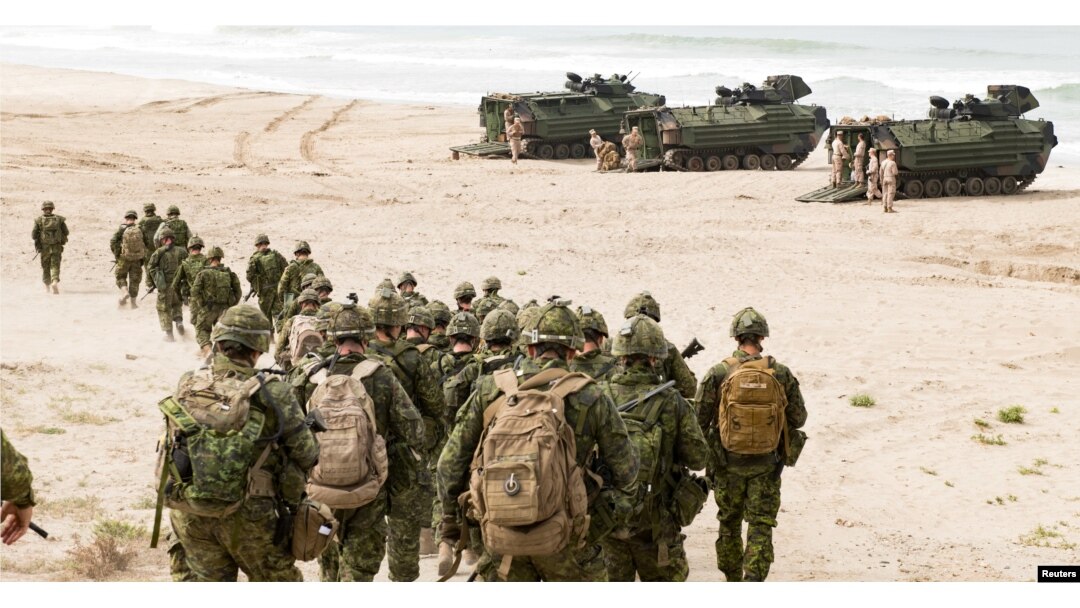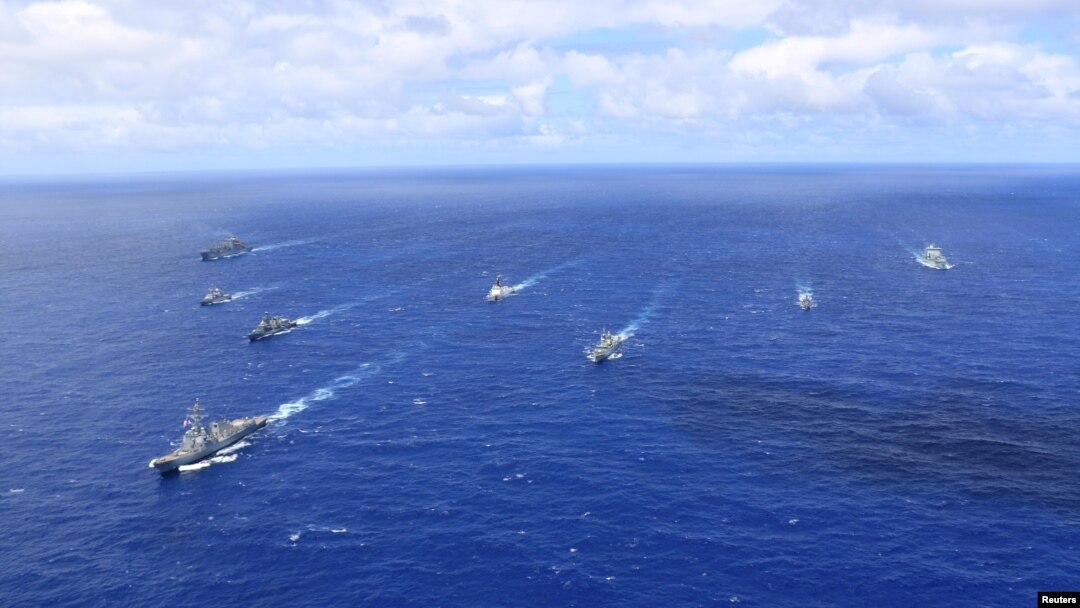China, though barred from the world’s largest multi-country naval exercises this year, will shrug off the slight because it has accumulated enough power in Asia’s disputed seas to cause it little concern about the U.S.-led maneuvers, experts believe.
The United States uninvited China from attending the Rim of the Pacific Exercise in view of Beijing’s naval expansion, the U.S. Department of Defense said in a statement June 2. The exercises better known as RIMPAC bring together 25 countries, 45 vessels and 25,000 people.
Beijing need not worry because it has already militarized its key islets in the South China Sea over the protests of Southeast Asian states and cultivated a blue-water navy that plies the open Pacific Ocean despite objections from Japan and Taiwan, analysts say.
“They’ll shrug it off,” said Jeffrey Kingston, author and history instructor at Temple University Japan. “I think they know there’s displeasure about their actions, but they’re not going to lose sleep over it.”
RIMPAC 2018 exercises
RIMPAC exercises for 2018 began last week. The series of maneuvers coordinated from Honolulu were highlighted by amphibious assault vehicle training by U.S., Canadian and Mexican forces.

Canadian troops of the 2nd Battalion Royal 22e Regiment Bravo Company move toward amphibious assault vehicles during the biennial RIMPAC exercise at Red Beach Training Area, Camp Pendelton, California, June 27, 2018. (Canadian Armed Forces)
The exercises, set to last through July 16, will also cover live-fire drills, urban tactics and “scenario-based small-unit leadership exercises,” the U.S. Navy’s website said.
Exercises help the military personnel of participating countries — all fundamentally U.S. allies — get to know one another for future cooperation and emergency responses, said Jay Batongbacal, a University of the Philippines international maritime affairs professor. The event poses no threat to China, he said.
The U.S. government “disinvited” the People's Liberation Army Navy from the 2018 exercises “as initial response to China's continued militarization of the South China Sea,” Defense Secretary James Mattis was quoted saying on his department’s website.
“China's behavior is inconsistent with the principles and the purposes of the RIMPAC exercise, an exercise in which transparency and cooperation are hallmarks,” he said.
Beijing sealed itself off from RIMPAC by placing missiles and fighter jets in the disputed South China Sea and passing naval vessels and military aircraft near Taiwan since 2016, analysts say.
“Beijing’s militarization of the South China Sea, as well as its continued encirclement and harassment of Taiwan, clearly places it outside our circle of like-minded partners,” said Sean King, vice president of the Park Strategies political consultancy in New York.
China undaunted
China attended the 2016 RIMPAC exercises with five warships, 1,200 officers and soldiers as well as combat divers. It was invited back to the event last year. RIMPAC was first held in 1971.
This year its Communist Party-run newspaper Global Times called “the provocative involvement of the U.S…. now the biggest source of risk” in the region.
Beijing need not fret over its exclusion because it has built military infrastructure on its main holdings in the South China Sea with unimpeded access for aircraft, radar systems and in one case reported earlier this year, missiles, scholars in Asia say.
“China’s policies over the South China Sea are pretty much set in stone, as far as it’s concerned, so even if it did participate in RIMPAC it would not have changed anything,” Batongbacal said.
Brunei, Malaysia, the Philippines, Taiwan and Vietnam contest Chinese sovereignty over all or parts of the South China Sea. China has the strongest armed forces in the region. It has offered economic aid to much of Southeast Asia, effectively keeping some of the disputants there quiet, scholars have said previously.
All claimants prize the 3.5 million-square-kilometer sea for its fisheries and fossil fuel reserves. Washington does not have a claim to the waterway, which extends from Hong Kong south to the island of Borneo, but it periodically sends vessels to the sea to counter Chinese influence.
China has rattled Taiwan over the past three years with military aircraft flybys near the self-ruled island’s air defense identification zone and tested Japanese control over the uninhabited Senkaku islands in the East China Sea. China claims the same islands, which it calls the Diaoyu.
South China Sea Territorial Claims
Japan and the four Southeast Asian states that dispute Beijing’s South China Sea claims joined RIMPAC this year. Japan will be glad China’s not there, Kingston said. The Philippines can “practice and learn” from RIMPAC’s joint operations, Batongbacal said.
China might retaliate against its un-invitation by spiking a future military exchange with the United States, said Huang Kwei-bo, vice dean of the international affairs college at National Chengchi University in Taipei. But in the long term, he said, “military exchanges will be normal.”
“I don’t know how [China] would react if it wanted to,” Huang said. “To react, for example, if a U.S. general were to visit, they could say ‘no need to come.’”


